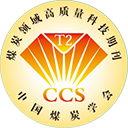Abstract:
In order to clarify the mechanism of the competitive adsorption of CO
2 and CH
4 influenced by microstructure of tectonically-deformed coal, based on Grand Canonical Monte Carlo, Molecular Dynamics method, and Density Functional Theory, the effects of the extension of basic structural unit (
L a), the number of basic structural unit (
N), slit aperture (
d), surface defects (
V), and oxygen-containing functional groups (
M) on the adsorption behavior of CO
2 and CH
4 were investigated. The results show that the adsorption amount of CO
2 and CH
4 and the average isosteric heat of adsorption increase with the increase of
L a and
d but decrease with the increase of
N. The presence of
V and
M in tectonically-deformed coal reduces the adsorption amount and average isosteric heat of adsorption. The adsorptions of CO
2 and CH
4 on the surfaces of secondary defects are stronger than that on the surfaces of single defects. The carboxyl is the most unfavorable for CO
2 adsorption on coal surface, and the hydroxyl is the most unfavorable for CH
4 adsorption on coal surface. The selectivity coefficients of CO
2/CH
4 are always greater than 1, the smaller the slit pore size, the more significant advantage of CO
2 competitive adsorption is. Furthermore, the peak value of the electron density of states of CO
2 is larger than that of CH
4 at Fermi level after CO
2 and CH
4 are adsorbed on the coal surface, indicating that CO
2 plays a dominant role in the competitive adsorption process with CH
4. Overall, the competitive adsorption mechanism of CO
2 and CH
4 in different tectonically-deformed coal structures is revealed from the microscopic point of view, and the results can provide a theoretical basis for the efficient exploitation of coalbed methane.



 下载:
下载: